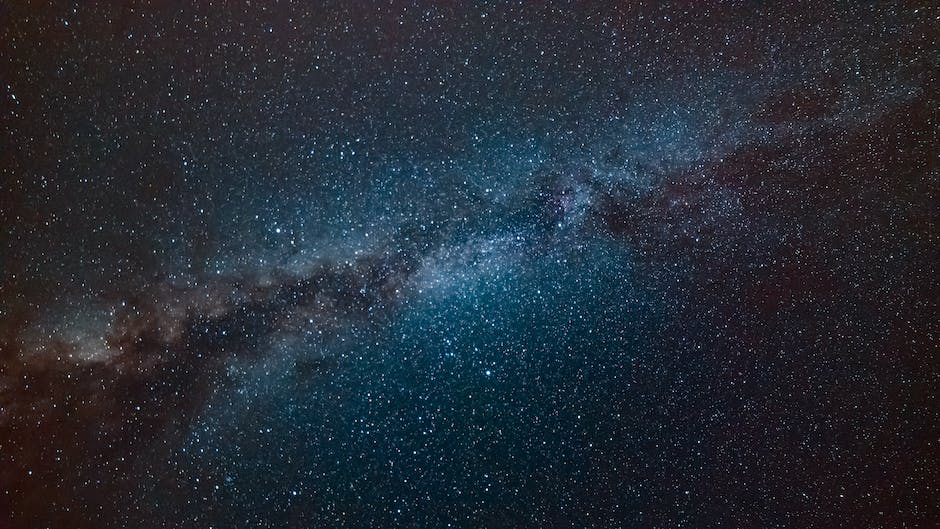Throughout human history, our sleep has often been punctuated by vivid dreams wherein we defy gravity itself to fly high above the earth. Perhaps one of the oldest dream phenomenons, the experience of “flying dreams” is not confined to any specific culture or time period. Ancient documents, oral narratives, and archaeological tidbits collectively suggest a longstanding familiarity with this dream phenomenon. This exploration into the realm of the subconscious delves deeper into the prevalence of flying dreams in ancient cultures, embarking on a holistic journey that treads the vibrant tapestry of cultural, spiritual, and mythological interpretations, and further venturing into the parallel universes of ancient shamanism and modern scientific insights.
Flying Dreams: An Ancient Phenomenon
Dreams and Flight
Humans have been fascinated by dreams, especially flying dreams. Such dreams are often associated with a sense of freedom, ecstasy, or spiritual transcendence, and have been the subject of many cultures throughout history.
The idea of flying through dreams breaks the bounds of reality and hints at our yearning for the expansive, the unknown, and infinite possibilities.
Ancient Literature on Flying Dreams
Ancient literature is one of the prominent sources where one can find abundant evidence of flying dreams. For instance, the ancient Indian epic, the Ramayana, depicts a dream where King Dasharatha flies through the air. Similarly, the Greeks had Morpheus, the God of dreams who had the power to fly in the dreams of mortals. Additionally, ancient Chinese writings contain various narratives about dreams of flight. In the “Zhuangzi,” the protagonist dreams of flying as a butterfly, experiencing joy and freedom unlike his waking life.
Flying Dreams in Culture and Mythology
Cultural influence plays a significant role in interpreting flying in dreams. In ancient Egypt, flying was often associated with immortality and divinity. Similarly, in Native American cultures, dreams involving flight were considered messages from the spirit world. They were often a call to the dreamer to embrace their spiritual journey, possibly as a healer or shaman. In Celtic tradition, dreams of flying were associated with the journey of the soul, particularly the soul’s flight to the other world or the celestial journey of heroes. The ability to fly was attributed to the fairies, demigods, and certain saints in Celtic mythology, further underscoring the spiritual significance of such dreams.
Interpretation of Flying Dreams in Ancient Societies
In ancient societies, dreams were not mere figments of one’s imagination, but powerful omens, guidance, or divine messages. Flying dreams, in particular, were often associated with a transcendence over mortal limitations. In ancient Greece, for instance, a dream of flight might suggest a specific individual’s divine favor or the promise of future victories or great achievements. Likewise, in Mesopotamian cultures, dreams, including flying dreams, were considered prophetic visions that could predict ambitious prospects and one’s ascension of social status.
The concept of dream flight was also prevalent in the ancient Norse culture where it was believed that their soul, or a portion of it, which they called ‘Hamr,’ could leave the body during sleep. This Hamr could then fly or travel to other locations, bringing back the knowledge and wisdom seated in these places.
Ancient Interpretations of Flying Dreams
The concept of flying dreams has a deep, multifaceted, and universally recognized history. Looking at ancient views on these dreams from cultural, spiritual, and mythological perspectives provides a window into our ancestral understanding of dreams. Moreover, they illuminate the shared human desire for transcendence and the exploration of the impenetrable depths of the subconscious.
In today’s world, our understanding of ancient interpretations of these dreams could provide a solid basis for exploring our psyche, unpacking our dreams, and demystifying the enigmas of our subconscious mind.

Symbolism and Significance of Flying Dreams
The Significance of Flying Dreams in Multiple Ancient Civilizations
The allure of flying dreams was not lost on various ancient civilizations, each assigning different interpretations and symbolic meanings to them.
For instance, in ancient Egypt, dreams of flying were seen as signifiers of the soul’s voyage to the afterlife. Egyptians venerated a concept known as “Ba,” a term roughly translating to ‘soul.’ They envisaged Ba as a bird with a human face able to traverse the realms of the living and the departed. Consequently, dreams involving flight took on profound spiritual significance as they were understood to signify the journey of the soul.
Flying Dreams in Ancient China
Likewise, in ancient China, flying dreams were also seen as representing the journey of the soul. This belief seems to stem from the Chinese philosophical concepts of yin and yang and the belief in Qi or the life force. Any notion of flying was associated with the rising of Qi. This Qi was thought to allow a person’s consciousness to leave their physical body and travel to spiritual realms, symbolizing spiritual development, freedom, and liberation.
Significance of Flying Dreams in Native American Cultures
In the Native American culture, flying dreams were believed to indicate spiritual freedom and a direct connection with the Great Spirit or the Supreme Being. Many native tribes viewed animals, such as eagles and ravens, which had the ability to fly, as spiritual beings or messengers of the gods. Therefore, dreams of flying were seen as significant spiritual messages or signs of divine approval.
Dreams of Flying in Greek and Roman Mythology
In Greek and Roman mythology, flying dreams were seen as prophetic or as omens of change. One classic example is Icarus, who flew too close to the sun on wings crafted by his father Daedalus. His dreams of flying resulted in a fatal fall to earth. This story may be seen as a moral cautionary tale about the dangers of excessive ambition or hubris. But it could also imply that dreams of flying bring humans closer to the divine, even if it can lead to drastic consequences.
Interpreting The Phenomenon of Flying Dreams
Across different cultures and socio-geographical diversities, the phenomenon of flying dreams has universally been seen as symbolic of freedom, personal growth, and a higher presiding force. When we delve into the cross-cultural myths and folktales, it’s apparent how dreams of flying might have influenced the mythic creation of celestial creatures like the phoenix, dragons, or winged-horses. It’s intriguing to note the common theme that transcends cultural differences: flying dreams are largely interpreted as a sign of spiritual ascension and an inherent human desire for liberty.

Flying Dreams and Ancient Shamanism
Flying Dreams: A Historical and Universal Phenomenon
Flying dreams are a ubiquitous human experience, spanning across generations and time. Ancient cultures did not dismiss these dreams as mere whimsy. Instead, they held deeper, significant religious implications, influencing spiritual understanding and practices.
These aerial dreams, in particular, were closely tied to shamanic customs – an integral part of ancient societies. They became the spiritual connectors between the material and the astral realm.
Therefore, dreams, especially those implying flight, had a profound influence on shaping the religious and cosmological perceptions in these ancient cultures.
Flying Dreams: Significance in Shamanic Cultures
Often, shamans – spiritual intermediaries in many tribal cultures – utilized dreams as a means to journey to other realms and communicate with divine beings.
Flying dreams were particularly significant for shamans because they symbolize the ability to transcend the physical plane, offering the shaman the capacity for astral projection, or spiritual travel.
In this state, the shaman’s spirit would be free to roam the spiritual plane, allowing them to obtain valuable insights, seek healing, or commune with spiritual entities.
Interpretation and Utilization of Flying Dreams
Different cultures, however, interpreted and utilized the phenomenon of flying dreams according to their specific cosmological and spiritual beliefs.
For example, in some Native American cultures, flying dreams were often seen as visits from totem animals, most predominantly birds, as avian creatures are symbolic of freedom and spiritual transcendence.
The occurrence of such dreams warranted ceremonies, rites, or specific tasks designated by the tribe’s spiritual elders.
In the shamanic traditions of Siberia and Central Asia, flying is often associated with the metaphorical flight of the soul during rituals.
The shaman’s soul is believed to travel to other worlds, interact with spirits, and return, bringing back knowledge and power.
The dream flight in these traditions could be a preparatory stage for the shamanic journey.
Flying Dreams in Astral Projection
A category of flying dreams that often appears in the context of shamanic practices is lucid dreaming, in which the dreamer is aware that they are dreaming and may even exert control over the dream’s course.
This state of consciousness was actively pursued by shamans, as it enabled a form of astral projection where the individual could consciously navigate the spiritual plane.
The Shaman’s journey, also known as the Shamanic flight, shares interesting parallels with modern interpretations of out-of-body experiences (OBEs) or Near-Death Experiences (NDEs).
The individual perceives themselves flying or floating, free from their physical body, often traveling through surreal or transcendent landscapes.
This capacity was believed to enable the Shaman to solve problems, healing and, crucially, communicate with the spirit realm.
Conclusion
The universal thread of flying dreams in Shamanic practices across multiple cultures taps into the innate human longing for liberty, spiritual awakening, and the capacity to break free from physical restrictions.
The conscious manipulation of dreaming, particularly with flying dreams, unveils the intricate links that ancient societies had with their dream world, correlating it with the larger cosmological lens that formed their perspectives.
Despite the progression of human civilization and the transformation of spiritual ideologies, the enduring allure of flying dreams remains, serving as an enduring testament to their timeless significance and profound symbolic resonance.

Scientific Insights into Flying Dreams
Flying Dreams: A Fusion of Mythology, Spirituality, and Science
The intriguing theme of flying dreams has been ever-present across various cultures for millennia. This unique nocturnal experience has captivated not only individuals immersed in the dream state but also researchers exploring the psychological and neurobiological nuances of such dreams. According to Carl Jung, the Swiss psychiatrist, and founder of analytical psychology, dreams, especially those involving flight, serve as an invaluable doorway to unlocking the mysteries of the subconscious mind.
Ancient Perceptions of Flying Dreams
Studies of historical texts reveal that ancient cultures bear a rich heritage of flying dreams and their interpretations. These cultures developed a myriad of explanations for the origin and meaning of flying dreams. For the Egyptians, dreams were a magical portal to the divine realm, providing foresight into the future or presenting obscure messages from gods. Their sacred book of dreams presented flying as symbolizing escape, spiritual awakening, or having a broad view of life. The Greeks, too, saw dreams as divine communications. Greek philosopher Artemidorus wrote a detailed text “Oneirocritica,” analyzing various dream themes including flying, which he proposed as significant symbols of power and freedom.
Scientific Understanding of Flying Dreams
Modern psychological research offers varied outlooks on flying dreams. Sigmund Freud, the father of psychoanalysis, contended that flying dreams revealed repressed sexual desires and aspirations. Carl Jung however contrasted this view, arguing that flying dreams heralded a period of transition or change, helping individuals realize their full potential. Some scientists see flying dreams as a form of “wish-fulfillment” – a reflection of our innate, yet unfulfilled longing for freedom and transcendence.
Neurobiologically, flying dreams might be attributed to the activation of the amygdala and hippocampus. The amygdala being responsible for processing fear and emotions, and the hippocampus playing a key role in spatial memory and navigation, their activation can result in a simulation of flight during sleep.
Lucid Dreaming and Dream Control
The concept of controlling dreams or lucid dreaming – awareness of dreaming while a dream is taking place – has been described in ancient Hindu practices and Tibetan Buddhism as a device towards spiritual enlightenment. Ancient Egyptians similarly believed in sleep temples where priests could invoke lucid dreams to tackle health and psychological issues. Today, the phenomenon of lucid dreaming is scientifically validated and believed to have potential therapeutic benefits, including the reduction of nightmares and fostering creative problem solving.
Closing Thoughts
Analyzing flying dreams in ancient cultures in the light of modern scientific insights reveals a fascinating intersection of mythology, spirituality, and science. While our ancient counterparts viewed them as divine messages or symbols of freedom, science unpacks them from a psychological and neurobiological perspective, highlighting the interplay of emotions, desires, and brain activity. Partially, both these views converge to conclude that flying dreams might be subconscious expressions of a longing for freedom, desire for metamorphosis, or grappling fear. Be it ancient cultures or modern times, our dreams, especially those of flying, reflect our deepest desires and anxieties, so get ready to take flight!

From ancient epochs to the modern era, flying dreams have retained an enchanting allure, representing a curious blend of cultural narratives, spiritual practices, mythological imagery, and psychological phenomena. Whether it’s the spiritual journey of a shaman taking flight in his dreams, the chimera of flying creatures in ancient mythology, or the curious insights from neurobiology and psychology, the phenomenon of flying dreams unfailingly intrigues and mystifies. As we continue to explore and understand the intricate labyrinth of the human mind, dreams, especially flying ones, position themselves not just as nocturnal theatre of the absurd, but also as compelling portals into comprehending the depths of human subconscious.
